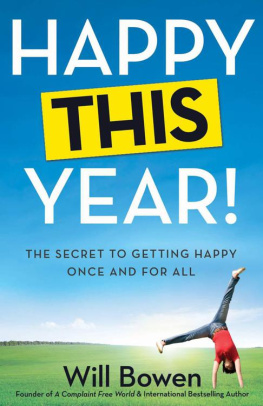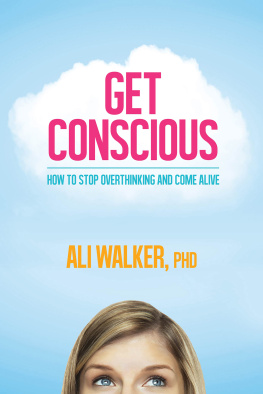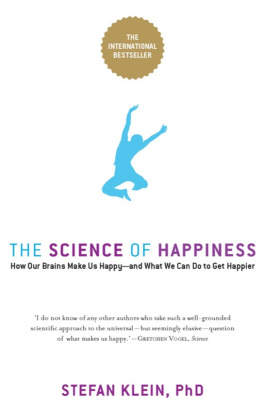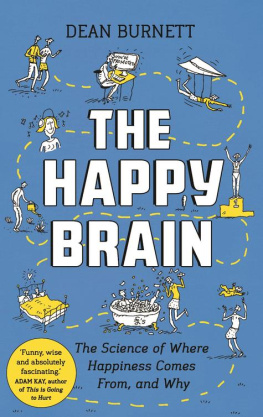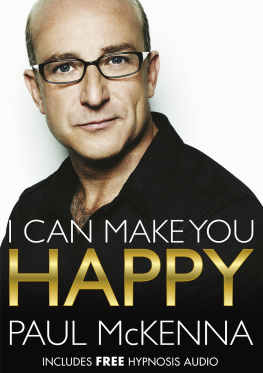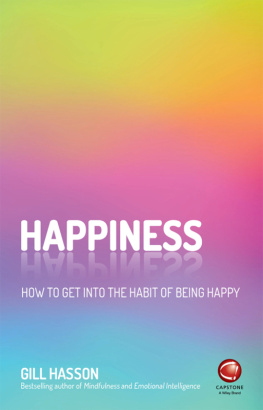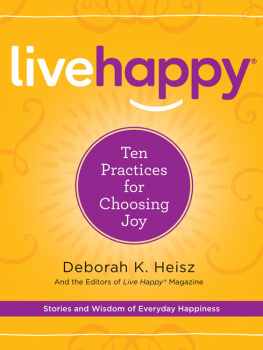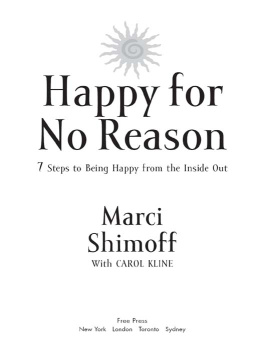

Text copyright 2013 Will Bowen
All rights reserved.
No part of this book may be reproduced, or stored in a retrieval system, or transmitted in any form or by any means, electronic, mechanical, photocopying, recording, or otherwise, without express written permission of the publisher.
Published by Brilliance Publishing
1704 Eaton Drive
Grand Haven, MI 49417
ISBN-13: 9781611098952
ISBN-10: 1611098955
Library of Congress Control Number: 2012951303
DEDICATION
For my dad, Bill, whose example keeps me on my path.
ACKNOWLEDGMENTS
Thank you to Grand Harbor Press for affording me the great honor of being the first author in its new religion and spirituality imprintI look forward to many years working together to help inspire and awaken human consciousness. Gary Krebs, your insights and guidance have been invaluable. Steve Hanselman of LevelFiveMedia, my literary agent and friend, you continue to be an invaluable resource, sounding board, and mentor. Thank you to Julia Serebrinsky for your patience in helping me refine my ideas and clarify my direction. Marti Lee, your happy example first inspired me to attempt to fully awaken happiness within myself. Thank you to my daughter, Lia, for your support and insights that far exceed your years. Thanks to all of my spiritual partners at InVision; your belief in me and support of my work brings me more joy than you will ever know. Terry Lund, your prayers have helped me maintain the highest perspective for my life. Thank you to Reed and Anita Brown for sharing your home, your hearts, and your culture with me; blessings to you and to all my relatives. And thank you to Clay Johnston and Robin Kowalski for helping me take a fresh look at raising peoples happiness levels.
Contents
INTRODUCTION
Happiness lies in the consciousness we have of it, and by no means in the way the future keeps its promises.
George Sand
Y our destiny is to be happy.
Deep within your heart, you know this to be true.
The underlying reason for everything human beings aspire to do, achieve, or possess is sourced by an unstated and often unconscious belief that it will somehow increase their overall level of happiness. And yet high and enduring levels of happiness tend to find ways of eluding us.
You can become measurably and sustainably happier this year. This book will inspire you to draw a line in the sands of your life and declare unequivocally that over the next 12 months you will begin to experience a happier life. At this pronouncement, you may feel a surge of giddy excitementas well as a pang of nagging doubtbut within these pages, you will find both the processes and shifts necessary to enjoy increased levels of happiness.
Becoming happier takes effort, but what you probably dont realize is that you are already expending a great deal of effort trying to be happy and yet are probably not fully realizing the results you seek.
In this book, you will discover new ways to bring forth higher levels of happiness and, more important, you will learn how to let go of things that youve been doing that are actually impeding your progress.
You will notice that I will often compare the process of becoming a happier person to becoming more physically fit. This is a relatable metaphor, and you will find that the two major elements to achieving increased fitness are the same for becoming a happier person.
The two components that determine your level of fitnessnutrition (what you put into your body) and exercise (what you do with your body)are the same for being happy. What you put into your mind and what you do with your mind strengthen your emotional state, allowing you to enjoy higher and higher levels of happiness.
A TRULY HAPPY NEW YEAR!
We will consider the transformation to a happier life within the context of a New Year, but dont get caught up in this metaphor. Whether this book enters your hands and begins to merge with your consciousness on January 1, February 10, July 14, or whatever day, it marks the beginning of a New Year for you and a happier new life.
The advent of a New Year is inextricably linked to happiness the world over, as you can see in the following examples:
- In the United States, as well as in many other countries, the New Year is celebrated with Happy New Year! exclamations.
- In China, people display the f characterswhich stand for blessings or happinessin their homes at the beginning of each New Year. And, prior to receiving traditional red envelopes containing money, Chinese children wish their parents a healthy and happy New Year.
- In Japan, New Years celebrations traditionally include the serving of kohaku kamaboko , red and white fish cakesthe red color symbolizing happiness.
- On New Years Eve, Mexicans court happiness by wearing colorful underwear.
- Similarly, precisely at midnight on New Years Eve, Brazilians rush to don yellow underwear, believing that this will produce greater happiness in the coming year.
- As part of their New Year celebrations, Ecuadorians burn pictures of unhappy moments from the previous year as a means of purging negativity and opening themselves up to happier experiences in the coming year.
- Citizens of Turkey welcome the New Year by engaging in philanthropic activity, believing that doing good deeds for others will bring greater happiness in the coming 12 months.
Not only do New Years rituals around the globe center around happiness but it is also our universal desire to experience happiness that causes people the world over to engage in setting New Years resolutions. Deep down we believe, although we rarely acknowledge it, that setting intentions to make positive changes in our behaviors and habits during the coming year will ultimately bring about increased happiness.
According to USA.gov , a US government website, the most common New Years resolutions in the United States are:
- Drink less alcohol.
- Eat healthy food.
- Get a better education.
- Get a better job.
- Get fit.
- Lose weight.
- Manage debt.
- Manage stress.
- Quit smoking.
- Reduce, reuse, and recycle.
- Save money.
- Take a trip.
- Volunteer to help others
Did you notice that become happier isnt on the list? Thats because becoming happier is the unmentioned desired result of all of our resolutions.
Ask yourself, why do people make resolutions such as those listed above? For example, why would someone resolve to drink less alcohol? Reasons vary by the individual, but perhaps the answer might be to become clearer in mind and healthier in body.
The question then becomes, Why would someone aspire to have a clearer mind and a healthier body?
Answer: To feel better and to enjoy life more.
To enjoy life more = to be happier.
Lets consider another example from the USA.gov list: to reduce, reuse, and recycle.
Why would a person wish to lessen his or her environmental imprint by reducing consumption, reusing what can be reused, and recycling what cant? Again, individual motives vary, but perhaps it is to feel a sense of making the world a better place; to feel as if he or she is making a differencein short, to feel good.
To feel good = to be happy.
If we dig deeply enough, all New Years resolutions circle back to a longing for increased happiness.
Its been joked that New Years resolutions are a to-do list for the first week in January. Most New Years resolutions, however well intentioned, scatter like birds shortly after they are made only to reappear the following year.
Next page
